
The page gives a sequence which starts with an eye spot, and ends with a fish eye. There are 8 other kinds of eyes (such as a fly's compound eyes) but this is the sequence leading towards human eyes.
The sequence meets the criteria we have already stated, namely:
The diagram below shows a simple eye spot. Let us assume it is in the skin of a multicellular creature. It has a dark backing, because that makes vision a bit more directional.

Next, an inward dimple happens under the eye spot. The eye spot begins to be on the surface of a shallow pit or depression. This increases the visual acuity, and also protects the eye spot from damage.

The dimpling continues until the depth of the pit is about equal to its width. This is now much like the eye of a planarian (flatworm).

Next, the rim of the pit begins to constrict. In camera terms, the eye begins to have an "aperture".
At some point - perhaps now, or perhaps later - the pit fills with a clear jelly. This may be a small mutation, or it could just be that the creature is covered by a slime layer anyway. In either case, the jelly or slime helps to hold the shape of the pit, and helps to protect the light sensitive cells from chemical damage. And, the jelly keeps mud out.
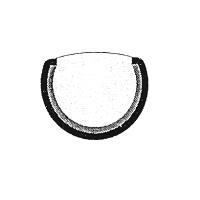
The aperture continues to decrease. Visual acuity increases until the aperture gets so small that it begins to shut out too much light. There will come a point when the aperture is the perfect size. A bigger aperture gives worse eyesight, and a smaller one gives worse eyesight. (The exact size that is "perfect" depends on how bright the lighting is.)
This is now much like the eye of a nautilus.
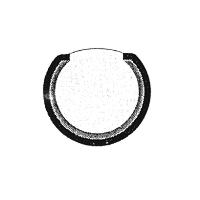
The eye above is a perfect "pinhole camera". It can only be improved by adding a lens.
To get a lens, one mutation is needed. The pit must be roofed over with a transparent layer. This mutation is not that strange. First, it could have happened at any time before this stage. (The original eye spot might have been covered.) Second, the transparent layer is useful, to keep a lensless eye from damage. And third, transparent materials are not hard to come by. (The human cornea is made from a protein which is also used elsewhere in the human body.)
So, the next step is the transparent layer becoming a little thicker in the center. Suddenly it isn't just a layer. It is a lens.
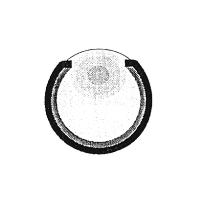
Now that the eye has a lens, the aperture is in the wrong place. The eye will be more acute if the lens moves inward, towards the center of curvature of the light-sensitive surface.
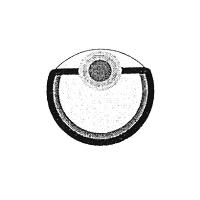
The lens continues to move inward. As it moves, the laws of optics say that a thicker and thicker lens is valuable.
Also, the refractive index of the center of the lens changes. This is possible because the lens is made from a mixture of proteins. The ratio of the proteins can be different in different places, so the lens material is not optically uniform. It is common for a biological lens to have a higher refractive index at the center than at the edges. This "graded index" is a very valuable property.
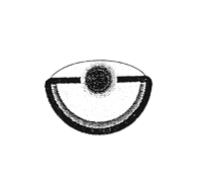
And we're done. This is a fish eye, complete with a spherical graded-index lens, placed at the exact center of the light-sensitive layer. The optical quality is excellent, being "aberration-free" over a 180 degree field of view.
These diagrams, and the analysis about them, are taken from
A Pessimistic Estimate Of The Time Required For An Eye To Evolve, D.-E. Nilsson and S. Pelger, Proceedings of the Royal Society London B, 1994, 256, pp. 53-58.